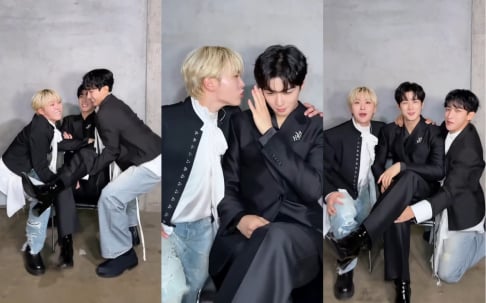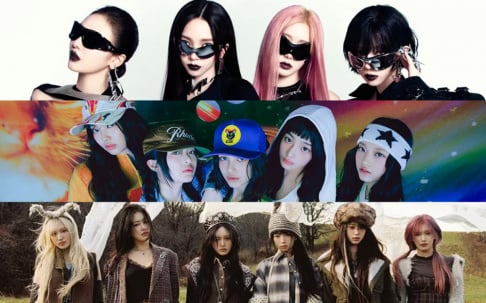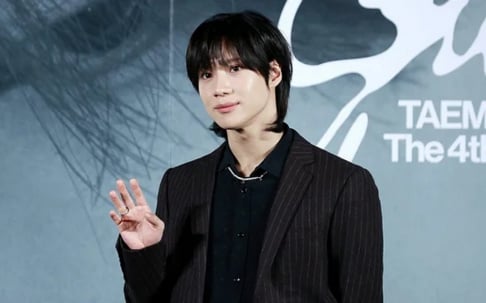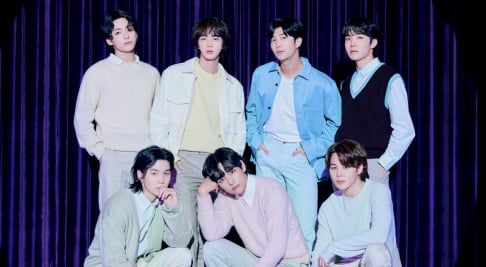
With K-pop’s meteoric rise in global popularity, it’s no surprise that entertainment companies are increasingly catering to international audiences. A noticeable trend in recent years is the inclusion of non-Korean members in what were traditionally all-Korean K-pop groups. This shift reflects the industry’s effort to diversify and appeal to fans worldwide.
HYBE's KATSEYE: A New Standard for Diversity
A prime example of this trend is HYBE's six-member girl group, KATSEYE. The group boasts an impressive mix of cultural representation, with members hailing from the Philippines, Switzerland, Venezuela, China, and India. Only one member, Yoonchae, is of Korean descent. KATSEYE's debut has sparked conversations about inclusivity and how it might redefine the K-pop landscape.
SM Entertainment's Bold Move with dearAlice
SM Entertainment, one of the "Big 3" K-pop companies, made headlines by debuting dearAlice, a British K-pop boy band. This marks the first time the company has launched a fully non-Korean group. While non-Korean members in K-pop are not a new phenomenon, the creation of an entirely non-Korean lineup is a bold step forward in breaking traditional norms.
A History of Non-Korean Members in K-Pop
While the inclusion of non-Korean members feels like a recent shift, it has roots going back to the early 2000s. For instance:
- Super Junior: Featured Chinese member Hangeng, who helped the group gain immense popularity in China.
- EXO: Initially debuted with multiple Chinese members, including Lay and Kris, who played pivotal roles in expanding the group's international reach.
- TWICE: A highly successful girl group with a mix of Japanese members (Momo, Sana, Mina) and a Taiwanese member (Tzuyu), showcasing a multi-national appeal.
The Debate: Is It Still "K-Pop"?
As K-pop continues to evolve and expand its reach across the globe, the inclusion of non-Korean members in K-pop groups has become a topic of heated discussion. At the heart of this debate is the question of identity: what defines K-pop? Many fans believe K-pop's essence is its "Korean-ness"—encompassing not only the Korean language used in lyrics but also the cultural nuances, traditions, and unique artistry that have long characterized the genre. These fans worry that greater diversity could dilute these core elements, transforming K-pop into something less distinctly Korean.
Conversely, others view this diversification as a natural and exciting evolution for a genre that has transcended borders. They argue that including non-Korean members reflects K-pop's global appeal and its ability to connect fans across cultures. For them, this diversity enriches the genre by introducing new perspectives and talents, broadening its artistic and cultural horizons.
This conversation is further complicated by growing interest from Western artists in adopting K-pop's distinct aesthetics and production techniques. This raises the question of how these artists should incorporate elements like K-pop's intricate choreography, vibrant visuals, and multi-genre musical blends—features that have captivated global audiences. Ideally, Western artists could draw inspiration from K-pop while reimagining these elements for their own audiences, creating a form of homage.
Artists like NewJeans and Stray Kids have already demonstrated how blending global influences can result in massive success. NewJeans, with their retro-inspired yet futuristic sound, have resonated with fans around the world, breaking the mold of traditional K-pop styles. Stray Kids, known for their self-produced tracks and edgy experimental sounds, have similarly shown how international influences can raise the bar for creativity and innovation within the genre. These groups not only highlight the potential of K-pop to adapt and grow but also showcase the power of embracing diverse cultural elements.
Ultimately, this debate highlights the dual nature of K-pop's identity: it is both a distinctly Korean cultural export and a global phenomenon that invites reinterpretation and collaboration. Whether the inclusion of non-Korean members or the adoption of K-pop's aesthetics by Western artists will redefine the genre or simply expand its influence remains to be seen. One thing is certain, however: the boundaries of K-pop are continually being pushed, reshaped, and reimagined in ways that keep the genre vibrant and relevant in an increasingly interconnected world.
The Future of K-Pop: A Global Phenomenon?
As more companies experiment with diverse lineups, the trend of non-Korean members seems poised to grow. Entertainment agencies recognize the financial potential of appealing to fans across continents. Groups like BLACKPINK and BTS have already proven that transcending cultural barriers can lead to unprecedented success.
However, this shift is not without challenges. Non-Korean idols often face linguistic barriers and cultural adjustments. Despite these hurdles, many fans are enthusiastic about seeing idols from various backgrounds bring fresh perspectives and talents to the genre.
What Does the Future Hold?
The presence of non-Korean members in K-pop groups isn't a mere trend; it's a sign of the industry's responsiveness to a global audience. Whether this diversification leads to a redefinition of K-pop's core identity or simply expands its global reach remains to be seen. One thing is clear: K-pop's journey from Korean export to global movement is far from over, and its future promises even greater evolution and cross-cultural exchange.
What are your thoughts on the inclusion of non-Korean members in K-pop groups? Is it a positive step toward inclusivity, or do you feel it detracts from the essence of K-pop? Share your opinions in the comments below!
 SHARE
SHARE












































